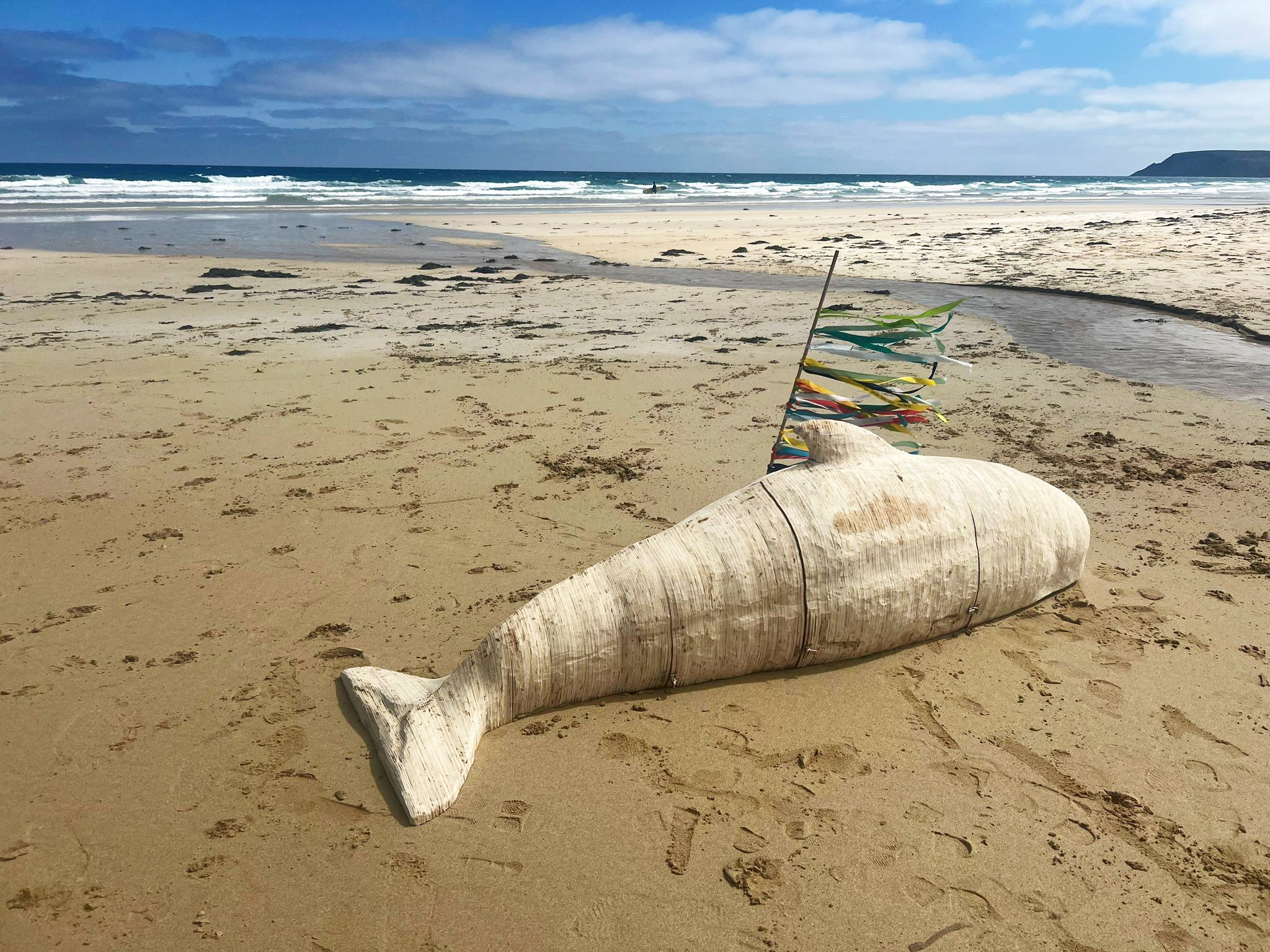
Whale Moulds
When science met art
At the heart of Keening – Song of the Stranding are wooden moulds created by visual artist Sam Gare. These moulds are used to create sand sculptures – temporary monuments to lives once lived – giving form to the memory of the whales. As the tide returns, the sculptures are gradually washed away – an act that mirrors the rhythms of nature and the transience of life.
Sam’s moulds were developed using 3D scans of a historic model held in the Natural History Museum’s cetacean collection. The original model was made in the 1930s by museum model maker Percy Stammwitz, who cast the body of a stranded long-finned pilot whale found on the shores of Wexford. His work forms a point of connection between past and present. Sam has reimagined this process using digital tools and traditional making techniques, creating carved wooden moulds that echo Percy’s original plaster moulds, the whale’s physical form, and the emotional weight of its absence. This process also looks to resurrect the animal held within historic collections.
Percy Stammwitz, dolphin casting c-1924. Photographs Courtesy of the Trustees of the Natural History Museum, London
Sam Gare 3D scanning Long-finned pilot whale model. Photograph Courtesy of the Trustees of the Natural History Museum, London
Sam’s wooden mould segments, echoing the segments Percy would create during his plaster casting process
Choreographer Aya Kobayashi will work with the public as part of the sand-casting process, guiding a collective movement that echoes the physical and emotional effort made by the local community during the 2023 rescue attempt. Each gesture in the shaping of the whales becomes an act of care and remembrance. Through this shared process, the performance becomes a quiet tribute to the compassion, solidarity, and deep emotional response that arose in the face of loss.
Importantly, these sand sculptures are not created by artists alone, but by the public. The moulds are designed to be accessible, inviting people of all ages to take part. In shaping the whales together, the community gathers once more for the whales. This is a work made for the public, by the public: a shared act of remembrance, care, and connection.
The moulds also speak to the way stranded whales are studied after death. Scientific data collected from these animals helps researchers understand their lives, health, and social bonds. In this work, the form of the whale becomes more than just data – it becomes story, memory, and a way of honouring lives that continue to teach us, even in their absence.
On the Beach
5 January 2024
Sam’s Audio Diaries
2. Thoughts on Strandings
30 January 2024
3. The Museum Specimen
5 Febuary 2024
4. The Connection
27 May 2024




